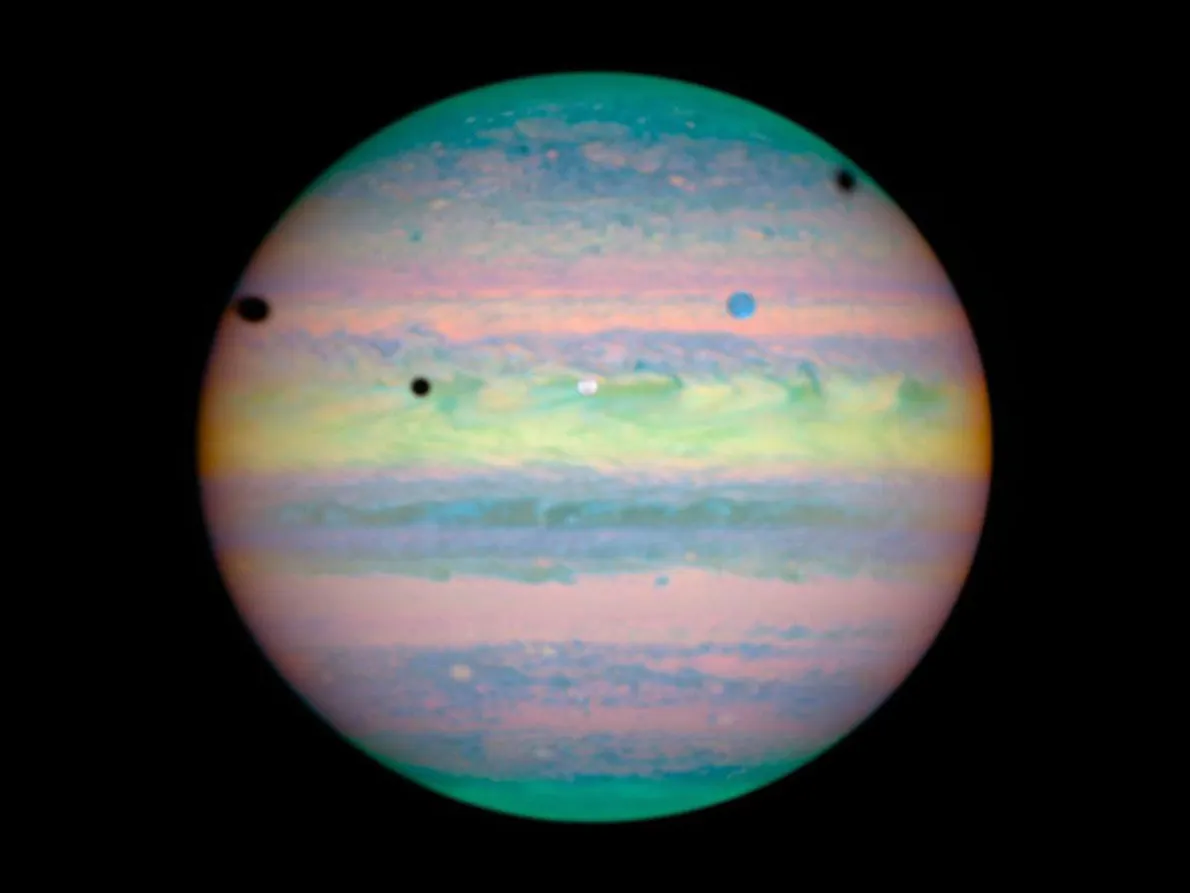Almost all of October and November, after sunset, a bright yellowish-white star begins to rise above the horizon in the opposite part of the celestial sphere, which is difficult not to notice even in the illuminated city sky. Anyone with even a little knowledge of astronomy will immediately recognize Jupiter, the largest planet in the Solar System. Now it is approaching its opposition, when the conditions for its visibility will be the best.
Recall that opposition is a configuration of the outer planet when the observer is between it and the Sun (in our case, the observer is on Earth or in its immediate vicinity). It is easy to understand that under such conditions, the planet is visible all night, and the distance to it will be the smallest in this epoch. Actually, this “shortest distance” also changes since all the bodies of the Solar System move in elliptical orbits, so that when they pass the opposition near the perihelion, they respectively take the opportunity to get closer to the Earth.
Last year, Jupiter came closest to Earth during its opposition in the last half century; on September 25, we were about 3.9526 AU away from it, or 591 million km. The current opposition will not be much farther away; the minimum distance to the gas giant will be 3,982 AU (596 million km). The planet is easy to find among the faint stars of the constellation Aries; in the upper culmination at the latitude of Kyiv, it will rise 53° above the horizon.

Since Jupiter moves in its orbit about 2.5 times slower than the Earth, it seems to ground observers for some time in the vicinity of the opposition that it moves against the background of stars in the direction opposite to its “habitual” movement (retrograde). In the case of the largest planet, this time is on average 121 days. After the opposition, its visibility conditions will begin to deteriorate, but slowly, so we will be able to admire the gas giant without any problems until the end of the year.
One orbit of Jupiter around the Sun lasts almost 12 years, that is, it passes about 1/12 of its orbit in one Earth year. Therefore, the time interval between its successive oppositions (the so-called synodic period) is a little more than 13 months. From 2014 to 2020, the Jovian opposition was the first among such events throughout the year, Saturn was “ahead” of it in 2021. This year it will actually become the penultimate one, Uranus will complete the cycle of oppositions on November 13.
The next opposition of Jupiter is expected on December 7, 2024, but in 2025 it will not reach this point a bit and will enter into opposition as early as January 10, 2026.
Earlier we published a selection of interesting facts about Jupiter.
Follow us on Twitter to get the most interesting space news in time
https://twitter.com/ust_magazine
